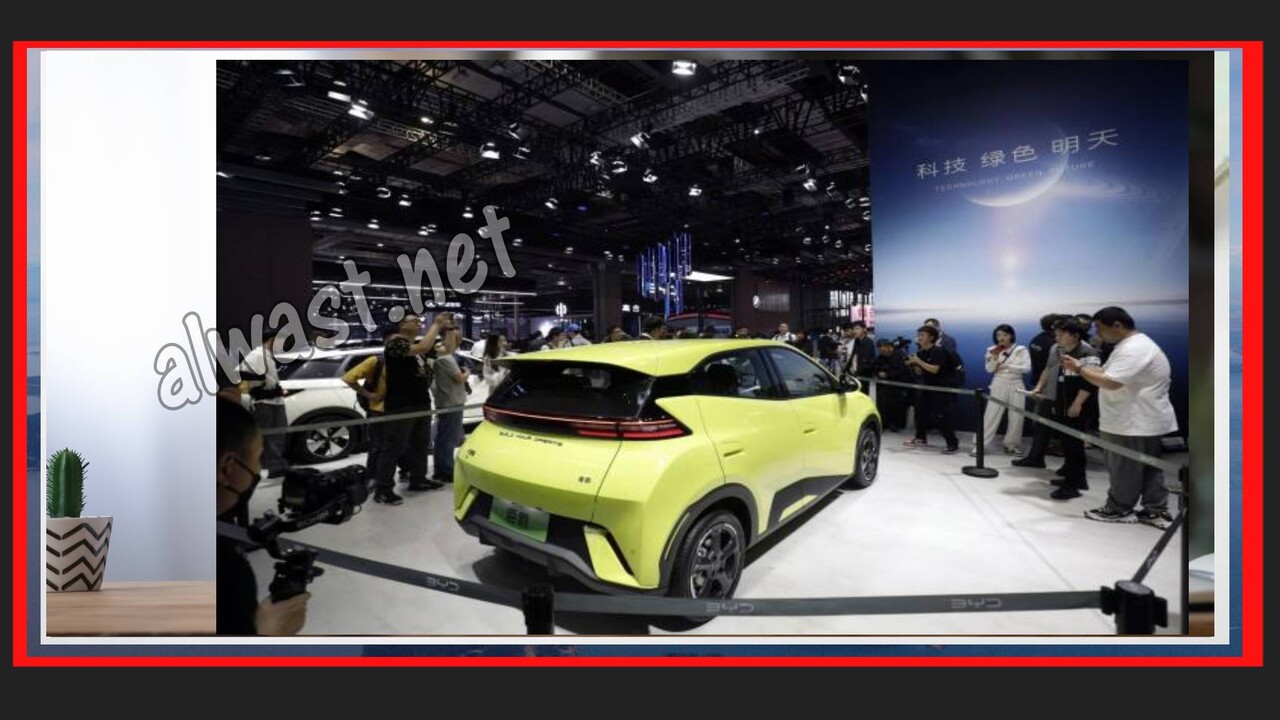Tech
China's $10,000 EV Invades Europe! Can Carmakers Compete?

Already, low-cost electric vehicles from China are making their way into Europe, which is putting one of the most important sectors in the area under pressure. BYD Company, which had previously surpassed Tesla Inc. as the largest electric vehicle (EV) manufacturer in the world, is ready to up the stakes.
Last month, the Chinese automaker said its Seagull hatchback will arrive in Europe next year. The automobile costs less than $10,000 in China and has a revolving touch screen and wireless phone charging. BYD officials estimate the Seagull to sell for under €20,000 ($21,500) in Europe after customs and adjustments.
A Chinese electric car threatens European industry giants at a price of $10,000
The four-seater would cost thousands less than electric runabouts Stellantis NV, Renault SA, and others want to use to bridge the energy transition. Its anticipated arrival puts pressure on European manufacturers to dominate the post-combustion engine era. A Brussels anti-subsidy inquiry is unlikely to stop the danger.
“We are looking very closely at this model and others coming from Chinese EV makers,” said Ford Motor Co.’s European EV chief Martin Sander. “Of course, new competition makes us nervous.”
BYD’s Seagull’s build quality, design, and technology are impressive for its pricing. No one-off: At a London industry event this month, European Managing Director Michael Shu indicated the business will launch a €25,000 luxury EV before the city car. BYD’s plans for two regional factories will mitigate EU levies aimed to impede its growth.
How Chinese Carmakers Dominate EVs: QuickTake
The model is popular internationally. Since February, customers in Mexico, where the car is called the Dolphin Mini, have started buying the 358,800-peso ($19,780) automobile despite poor charging infrastructure.
BYD Executive Vice President Stella Li said at a presentation last week in the capital that Mexico “is not great for us, but in the end we found a lot of demand, a lot of heat for this,” introducing a plug-in hybrid pickup.
BYD is leading Chinese carmakers that are eyeing exports after dominating their local market. In January, Tesla CEO Elon Musk threatened to “pretty much demolish” most carmakers without trade restrictions.
President Joe Biden has virtually quadrupled US levies on Chinese EVs, effectively banning imports, while European tariffs are more problematic. Regional carmakers are more dependent on China than US carmakers, rendering them vulnerable to retaliation. Beijing reiterated the point on Wednesday by threatening 25% taxes on imported automobiles with big engines, which would hit Mercedes-Benz Group AG and BMW AG hard.Read on: Biden Says China is ‘Cheating’ on Trade, Orders Tariffs
European combustion-engine vehicle sales will end, requiring cheaper automobiles to encourage mass-market adoption. The EU began investigating China’s EV business last year and is considering boosting duties, but industry leaders and experts have objected.
Julia Poliscanova, senior director for cars and e-mobility supply chains at advocacy group Transport & Environment, said tariffs should not insulate our key manufacturers from serious competition. On top of climate objectives, which are vital, local jobs and decarbonization without de-industrialization matter.
Read More: EV Market Jump to $57 Trillion Sparks Global Flashpoints
BYD began producing batteries in 1995 and moved into cars in 2003. Three years ago, it started selling passenger vehicles in Europe and created waves at Paris and Munich auto shows. BYD shares rose 9.6% this year after falling 23% in 2023. After years of rebuilding its dealer network and client base after its 2007 takeover by Shanghai Automotive Industry Corp., erstwhile British brand MG Motor is leading the way. The Chinese-made MG4 is currently the UK’s second-best selling EV behind Tesla’s Model Y.
Existing European carmakers are seeking unconventional solutions including new collaborations. Renault is actively seeking partners to decrease costs on a small-car platform, while Stellantis will begin selling cars built by its joint venture with Zhejiang Leapmotor Technologies Ltd. in September.
“We have no intention to let this price band open for our Chinese competitors,” Stellantis CEO Carlos Tavares said last week regarding the European Seagull, rejecting tariff calls. We don’t think protectionism will solve this rivalry.
Tavares has traditionally stressed quick response to opponents. The October contract with Leapmotor gives the Jeep and Peugeot owner access to China’s cost advantages and superior EV technology, which the US and EU say is subsidized by unfair government subsidies. Last year, Chinese brands had 7% of Europe’s electric market, but Transport & Environment expects them to reach 11% this year and 20% in 2027.
According to assessments, European and US automakers should take the Seagull seriously. Caresoft Global, a Michigan engineering business that disassembles cars to verify quality and manufacture, examined the Seagull for cost-saving elements.
“Everyone in the industry should be talking about this car, seriously, because it’s quite a vehicle,” Caresoft President Terry Woychowski said in an InsideEVs video. “It changes the definition of cheap and cheery, which was, ‘Oh, sell something really cheap.’ It doesn’t seem like that.”










